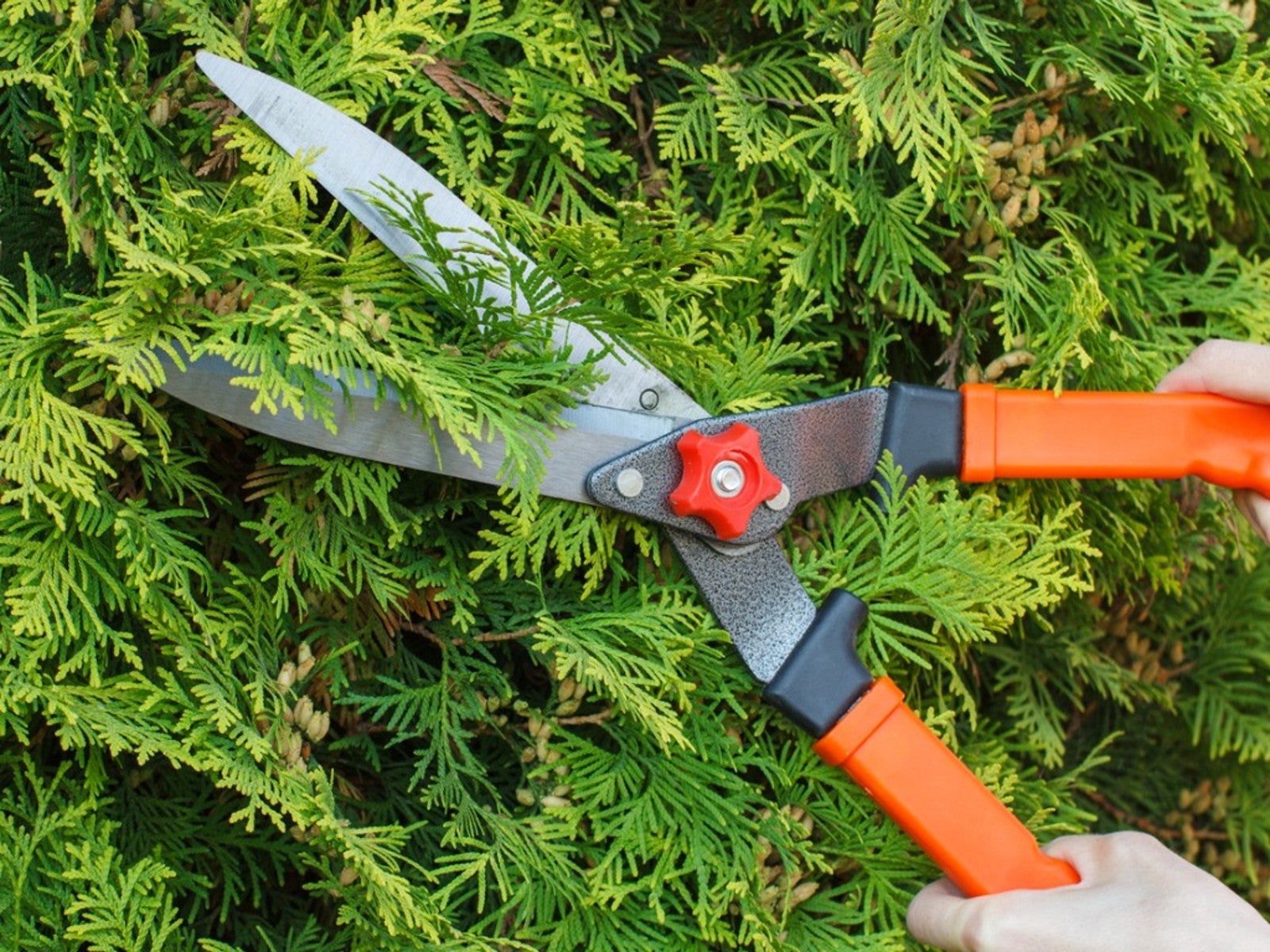Pruning Evergreens: How And When To Prune Different Evergreen Plants


Pruning evergreens can be intimidating if you aren’t sure what to do. There are some general rules as well as specifics for certain types of evergreens. Pruning at the wrong time or the wrong way may be detrimental to the tree or shrub, or leave it unsightly.
An evergreen is a tree that keeps its foliage year-round. There are two types of evergreens - narrowleaf or needled, such as pine and yew; and broadleaf, such as azalea and boxwood. The narrowleaf evergreens are usually sought for their foliage, while broadleaf evergreens are typically planted for flowers, fruit, and foliage.
Trimming evergreen bushes can be minimized with the selection and placement of the proper plant for the space. Before planting, choose a tree or shrub that won’t outgrow its space. Foundation plantings can quickly grow to cover windows or the porch if their height and width are not considered before purchasing.
Pruning an evergreen should be limited to removing dead or diseased limbs, maintaining its natural shape, or for trimming evergreen hedges or topiaries.
When To Prune Evergreens - Tips for Pruning Evergreen Shrubs and Trees
Needled evergreens are best pruned in early spring. Pine trees can wait till late spring to avoid the sap flow. Broadleaf evergreens should be pruned after they flower if they bloom in spring on last season’s growth (old wood), such as rhododendrons and azaleas. If that is not an issue, they can be pruned in early spring or anytime during the summer.
Once the end of summer arrives, do not prune evergreens anymore that year. They may not have enough time to harden off before winter and will be susceptible to winter injury. However, damaged, broken, or diseased wood can be removed at any time.
Here are guidelines for pruning narrowleaf evergreens:
Gardening tips, videos, info and more delivered right to your inbox!
Sign up for the Gardening Know How newsletter today and receive a free copy of our e-book "How to Grow Delicious Tomatoes".
- Spruce, fir and Douglas-Fir: These trees should not need much pruning. For a bushier tree, you can prune the tips off the branches to a side bud or side branch to promote more branches. They can tolerate more pruning, if needed, but do not cut past the needles on a branch.
- Pine: They generally do not need pruning. They only send out new growth in the spring on the terminal buds. They will not get new growth further down the stem. To promote a bushier tree when young, pinch off ½ to 2/3 of the new “candles.”
- Junipers, Chamaecyparis and Arborvitae: While they generally do not need to be pruned, if needed, it is best done in early spring. For a natural look, cut each branch tip back to a side branch to hide the cut. Avoid shearing after midsummer. Severely pruning an overgrown shrub will result in bare wood. It is better to remove the shrub and replace it with a smaller cultivar.
- Yews and Hemlocks: If the proper cultivars are selected, they should not need much pruning. However, they tolerate heavy pruning or shearing. A second light pruning in summer may be needed after a second flush of new growth.
Here are guidelines for pruning broadleaf evergreens:
- Rhododendron, Azalea, Pieris, Mountain Laurel: Shrubs that bloom in spring can be pruned afterward to remove spent flowers. Reblooming azaleas usually have the heaviest flush in spring and can be lightly pruned then. These shrubs are slow growing and need very little pruning.
- Evergreen Privet, Barberry, and Pyracantha: Fast growers, these can be pruned heavily if needed. They can be pruned in early spring as well as again in summer.
- Boxwood: Prune boxwood when actively growing. Pruning in winter can be slow to heal. If extensive pruning is needed, do it over a three-year period. They can be sheared into hedges or topiaries and lightly pruned as needed during the summer. Do not prune past late summer.
- Hollies: Prune hollies to maintain the natural shape of the tree or shrub. Wait till a holly is several years old before pruning. Japanese and Chinese hollies can tolerate heavier pruning than American holly. Hollies can be cut in winter for holiday decorations.
Pruning an evergreen can be less daunting by knowing what type of evergreen you have and learning best practices.

After graduating from Oklahoma State University with a degree in English, Susan pursued a career in communications. In addition, she wrote garden articles for magazines and authored a newspaper gardening column for many years. She contributed South-Central regional gardening columns for four years to Lowes.com. While living in Oklahoma, she served as a master gardener for 17 years.